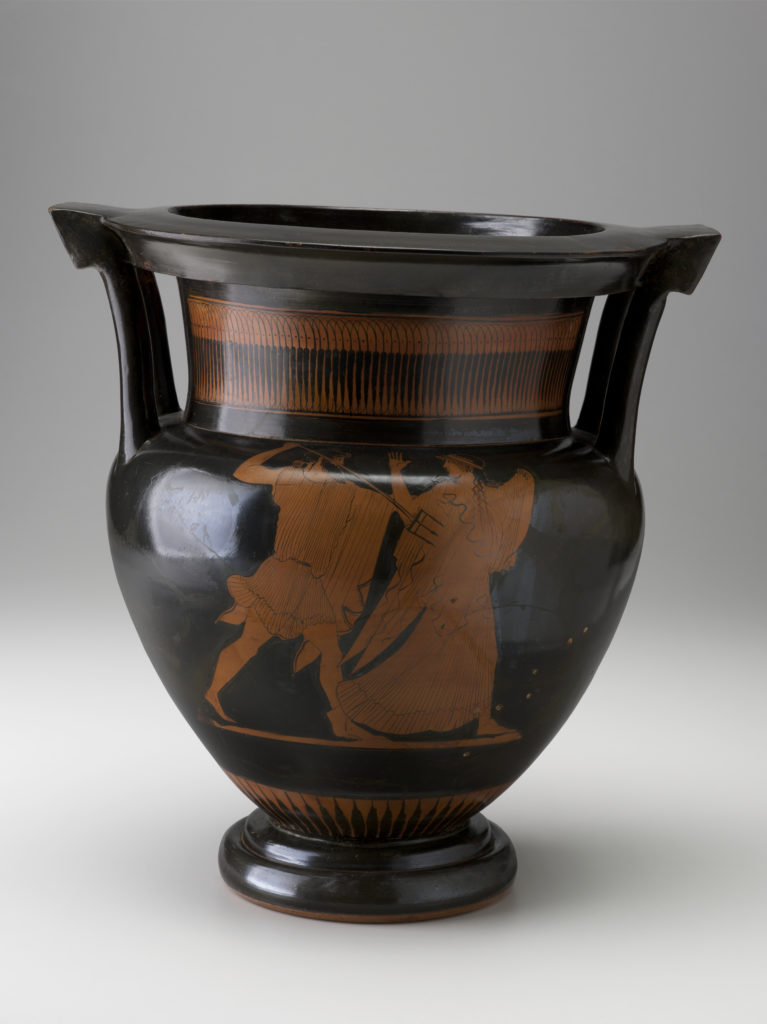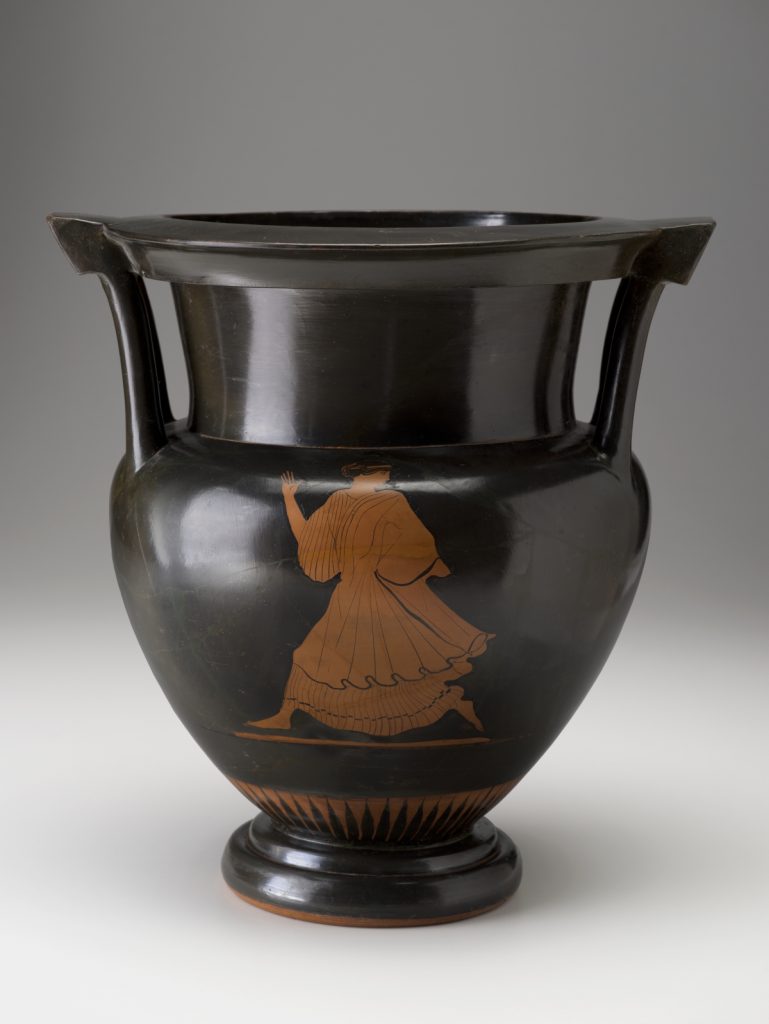Columna Krater con Poseidón persiguiendo a una mujer (obra de arte)
Información sobre la obra de arte
Acerca de
Key Ideas
- Poseidon, the ancient Greek god of the sea and earthquakes, is depicted as a bearded man holding a trident (a three-pronged spear) and chasing a frightened young woman. On the other side of the vase, another young woman is shown running away from him.
- Este recipiente, conocido como cráter de columna, se utilizaba originalmente para mezclar agua y vino. Se colocaba en el centro de un simposio, o fiesta griega para beber.
- Las figuras de color rojo sobre un fondo negro sólido se crearon con la técnica de las figuras rojas.
Más información
Poseidon, the Greek god of the sea and earthquakes, is often represented in art as a bearded man holding a trident (a three-pronged spear). He is depicted on this vase chasing a young woman with his trident. The woman is running away from him, holding up both of her hands in a gesture of fear or worry. On the other side of the vase, a young woman is shown running away while looking over her shoulder, as if she is also frightened by Poseidon. Scenes like this were common in ancient Greek myths and vase paintings. Ancient Greeks used mythology to explain their society and living conditions. The myths highlighted the experiences (both positive and negative) of real Greek women. These experiences include their domestic lives as well as their social and physical relationships with men.
Este vaso es una crátera de columna, un tipo de recipiente que se utilizaba comúnmente para mezclar agua y vino para un simposio (una fiesta griega para beber). La técnica artística utilizada para crear las figuras humanas rojas sobre un fondo negro se denomina técnica de la figura roja. El color rojo es el color natural de la arcilla. El color negro se creaba aplicando engobe, un tipo de arcilla líquida, al fondo.
tags: ancient Greece, narrative, pattern, function, order, power
Recursos adicionales
Recursos para los profesores:
- Lea un artículo sobre las formas de abordar temas difíciles (en relación con el arte griego) en el aula.
- Lea un artículo sobre la función de los kraters de columna y la cultura griega de la bebida.
- Explore un sitio web que incluye información sobre Poseidón, sus aficiones y su iconografía en el arte.
Recursos para los estudiantes:
- Vea un póster con imágenes de jarrones griegos antiguos.
- Conozca los datos clave sobre Poseidón.
- Watch a video about ancient Greek vases.


